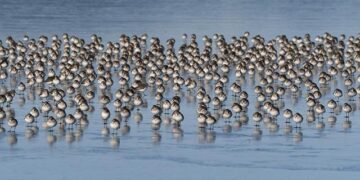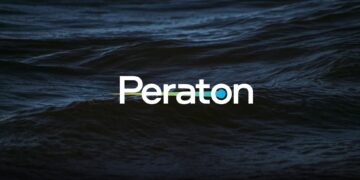Animals
Moby Dick made North Atlantic right whales famous—and put a target on their backs. Now, they’re careening toward extinction again, with just 365 individuals left.
ByMelissa Hobson
Published January 25, 2024
On January 6, 2024, a rare North Atlantic right whale calf in South Carolina was seen with devastating injuries on its head, mouth, and lip from a boat propeller. Officials at the National Oceanic and Atmospheric Administration predicted it may struggle to nurse and will likely die from its injuries.
Its wounds appeared to be healing when it was next seen just over a week later, but experts remain concerned—about this individual, and the survival of the population.
There are only 356 North Atlantic right whales left alive after the species was decimated by whaling in the 19th century. Could boat strikes and overfishing finish them off?
The plight of North Atlantic right whales
In his 1851 novel Moby Dick, Herman Melville describes right whales as “the most venerable of the leviathans, being the one first regularly hunted by man.”
For whalers—who targeted them for their oil and baleen—these animals were the right whales to hunt. The slow swimmers were found close to shore and floated once dead, so it was easy for harpooners to kill them and retrieve the body.
When protections were established in the 1930s, the population—once around 21,000 individuals—was nearly extinct. “It was thought that the North Atlantic species was down to just a couple of dozen animals,” says Amy Knowlton, senior scientist at New England Aquarium.
The species recovered, reaching nearly 500 individuals in 2010, before dropping off again by around 2017. This most recent decline has been levelling off, but the species is still critically endangered. Of 13 calves born this season, one is injured and two more are missing.
North Atlantic right whales—nicknamed the urban whale—are usually found close to the coastline between Florida and Atlantic Canada. Their habitat—including calving grounds—overlaps with shipping lanes, fishing grounds and recreational boat activity.
Boat strikes
Boat strikes are one of the main threats to right whales. Mothers and calves are at higher risk because they spend so much time at the surface but are notoriously hard to see. Even trained “right whale observers often cannot see right whales from boats,” says Francine Kershaw, senior scientist at the Natural Resources Defence Council.
In the southeastern U.S., vessels over 65 feet cannot travel faster than 10 knots (around 11.5 miles per hour) between November and April, when the whales are calving and at their most vulnerable. Research shows that sticking to these speed limits protects various whale species.
“You go slowly through a school zone because you don’t want to hurt a child,” says Regina Asmutis-Silvia, executive director at Whale and Dolphin Conservation.
However, according to Oceana’s Ship Speed Watch, 79 percent of ships violated speed limits between December 9, 2023, and January 3, 2024. One more than tripled the speed limit, traveling at 35.8 knots (44 miles per hour).
For Harry Eckman, CEO at World Cetacean Alliance—a non-profit that runs online vessel strike prevention training to maritime companies including those partnering with National Geographic expeditions —the solution is “so simple”: know where the whales are going to be, have an observer on deck, and slow down.
Traveling more slowly also reduces CO2 emissions and fuel consumption, saving money, “as well as obviously the environmental and reputational advantages to not killing a while,” he says.
While the speed limits only apply to large ships, smaller boats can still cause lethal injuries. In 2021, a 54-foot boat killed a calf. “But that vessel size is not regulated under the speed rule because it’s [for] vessels over 65 feet,” says Knowlton.
Proposals have been made to include vessels over 35 feet—around the size of a school bus—in this legislation, but these have not yet been put in place.
Conservationists are anxiously awaiting an update, particularly as there is no technology currently available that allows vessels to detect whales in real time. Slowing down is the only viable solution right now to protect these whales from collisions.
Fishing entanglements
Sharing their space with fishing grounds puts North Atlantic right whales at risk of becoming caught in fishing gear.
“Up to 86 percent of the population has been entangled at least once and some as many as nine times” says Knowlton.
Fixed-gear fisheries—which target species including crab and lobster—have a trap on the seabed with a rope attached to a buoy on the surface to prevent equipment from getting lost at sea.
Whales are often spooked when encountering this rope. Startled, instead of pulling away, “they’re actually… panicking and rolling into it,” says Asmutis-Silvia.
These lines can slice into the animals, cutting off the blood supply, causing infection, or preventing them from feeding if injured around the mouth. It can take six months to die.
To prevent entanglement, modified on-demand—or ropeless—fishing gear stores the rope at the bottom of the seafloor. When fishers return to retrieve their catch, they use an acoustic signal to bring the buoy line to the surface.
By stopping entanglements, removing the rope from the water also prevents industry from losing expensive equipment or catching non-target species they can’t sell.
Ocean gardeners
As well as shipping and fishing, the impacts of climate change are making it more difficult for right whales to find food. This causes malnourishment, and pushes them outside protected areas, which were designated based on the species’ previous distribution.
“Losing North Atlantic right whales for good is a real possibility,” says Kershaw, who predicts the species could pass the point of recovery in just over 10 years.
Whales are vital to the ecosystem because of the role they play in circulating nutrients throughout the ocean—feeding in deep waters then pooping at the surface. What would happen to the ocean if right whales were lost?
There’s a conservation analogy, says Asmutis-Silvia, that compares each species in an ecosystem to a bolt on a plane. The plane might survive without a few of them but how many bolts can you lose before it crashes?
When it comes to biodiversity loss, “I don’t want to find out which bolt was [the critical one],” she says.
Humans are the problem, so we can find a solution, says Asmutis-Silvia: “The population is viable and can recover if we stop killing them.”
>>> Read full article>>>
Copyright for syndicated content belongs to the linked Source : National Geographic – https://www.nationalgeographic.com/animals/article/north-atlantic-right-whales-ship-strikes-extinction




























